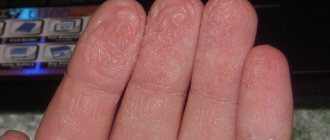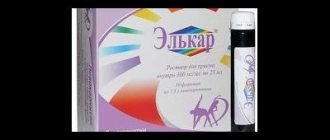Cortexin is a medicine that is used for diseases of the nervous system.
The drug is obtained from the cerebral cortex of cattle. For this purpose, the lyophilization method is used. Lyophilization is a method of obtaining peptides by freezing and drying. With this method of drug production, the biological effects of the resulting substances are well preserved. Allergic reactions to the resulting mixtures develop much less frequently than with conventional grinding of the original substrate.
A child is not a small adult. The child's body is much more complex. Many processes in it occur not linearly, but in waves. For example, height accelerates significantly during adolescence and then declines again.
Children's metabolic rate is higher. This is due to the fact that the body needs to constantly create new tissues and improve the structure of internal organs. These processes require a huge amount of energy.
Children need special medications created taking into account their anatomical and physiological characteristics.
Action of Cortexin
Cortexin is a mixture of polypeptides. After entering the body, the product is distributed throughout the body through the bloodstream.
Our body has a special formation - the blood-brain barrier (BBB). This is a set of mechanical and functional devices that regulate the metabolism between blood and brain tissue.
Due to the small size of its components, Cortexin passes through this barrier and can affect nerve structures.
The drug has the following types of effects:
- Nootropic – improves memory, attention and concentration. This occurs due to Cortexin’s ability to positively influence the mechanisms of communication of nerve cells with each other.
- Neuroprotective – increases the resistance of neurons to damaging influences: the effects of infections, toxic substances and lack of oxygen (hypoxia).
- Antioxidant – enhances the ability of nerve cells to survive in hypoxic conditions. This effect is possible by reducing the processes of fat peroxidation, during which free radicals are formed. Excessive amounts of free radicals damage cell membranes, causing them to die.
- Metabolic – improves the supply of nerve structures with nutrients and energy.
- Antiepileptic - reduces the risk of epilepsy attacks. Epileptic seizures develop due to too much stimulation of one or another part of the brain. Cortexin, due to its polypeptide nature, normalizes the ratio between excitatory and inhibitory fractions of the brain's own peptides.
What side effects can occur in pregnant women?
Pregnancy is the greatest physiological stress for a woman's body. Inside the mother's body, the development of the fetus occurs, which has a different set of antigens. Normally, when something foreign enters the internal environment of a person, the immune system makes active attempts to expel the foreign object. However, during pregnancy, the fetus must remain inside the mother's body for about 9 months. To prevent the immune system from interfering with this process, during pregnancy the amount of hormones and substances that suppress the immune system (progesterone, estrogen, cortisol, human chorionic gonadotropin, etc.) increases.
Thanks to this mechanism, allergic reactions in pregnant women occur less frequently.
There is no information about the occurrence of side effects of Cortexin when administered to pregnant women. However, due to the small number of clinical studies on the effect of Cortexin during pregnancy, this drug is contraindicated during pregnancy.
Indications for use
In children, Cortexin is used in the complex treatment of the following diseases:
- Cerebral palsy.
- Developmental disorders of learning skills, speech and language.
- Inflammatory diseases of the brain.
- Perinatal damage to the nervous system.
- Cognitive disorders.
- Attention deficit hyperactivity disorder.
- Encephalopathy.
Due to its universal action, the product can be used in all periods of the disease: from acute to restorative.
To develop a therapeutic effect, you must take Cortexin for at least 2 weeks.
More details about these diseases can be found in separate articles.
What side effects may occur in children?
The child’s body is immature in many respects, including the state of the immune system. The development of the following allergic reactions is typical for children:
- Atopic dermatitis (the skin turns red, becomes moist, and cracks may appear);
- Allergic conjunctivitis (inflammation of the mucous membrane of the eyes) and allergic rhinitis (runny nose);
- Food allergies (nausea, vomiting, bloating, belching, bowel problems such as constipation or diarrhea);
Allergic reactions develop faster in children than in adults. The severity of these reactions varies - from minor peeling of the skin to generalized swelling of the entire body. Often, the risk of side effects depends on the child’s pre-existing condition and the presence or absence of diseases.
When Cortexin was administered to children, no adverse reactions were observed.
Instructions for use
Cortexin is a dry whitish-yellow powder. It must be diluted before use. To do this, use saline solution, water for injection or local anesthetic. After receiving the finished mixture, it is drawn into a syringe and injected. The injection is given intramuscularly in the buttock or thigh area.
The procedure should be carried out once a day, preferably in the morning. The course of taking the drug is 10 days. If necessary, can be repeated after 3-6 months.
You can read the instructions for use of the drug in more detail in a separate article.
Cortexin
Cortexin is a domestic drug produced by pharmaceutical companies. This drug contains a combination of low molecular weight, water-soluble polypeptide fractions obtained by extraction from the cerebral cortex of pigs and calves. Cortexin penetrates the blood-brain barrier directly to neurons and has nootropic (stimulating mental activity), neuroprotective (stabilizing the state of nerve fibers), antioxidant and tissue-specific effects. The drug is used in the treatment of diseases associated with cerebrovascular accidents and other cerebral dysfunctions. The next part of the article will talk in more detail about all the facets of Cortexin’s pharmaceutical “talents”.
So, the first in the series of pharmacological effects of the drug in all instructions for use is indicated as nootropic. It is expressed in improving the higher functions of the brain, stimulating cognitive processes, strengthening memory, increasing concentration, increasing stability and adaptability in various stressful situations. The neuroprotective effect of cortexin is to protect neurons from the pathological effects of various internal neurotoxic factors (free radicals, glutamate, calcium ions), as well as to neutralize the toxic effects of psychotropic drugs. The drug exhibits its antioxidant effect by suppressing the processes of lipid peroxidation in nerve cells, increasing their survival under conditions of oxygen starvation and oxidative stress.
As for the tissue-specific action, it is expressed in the stimulation of metabolic processes in the neurons of the central and peripheral nervous system, activation of recovery processes, normalization of the functions of the cerebral cortex, and increase in the tone of the nervous system. If we extrapolate this entire set of pharmacological “benefits” to a specific clinical situation, then in “in vivo” conditions Cortexin achieves the right to be considered an effective drug in the following way: it activates peptides of nerve cells and neurotropic factors, harmonizes the balance of metabolic processes involving excitatory and inhibitory amino acids, serotonin, dopamine, affects the GABAergic regulatory system, suppresses paroxysmal convulsive activity of the brain, increases its bioelectrical activity, prevents the formation of lipid peroxidation products (in other words, free radicals).
Cotexin is available in the form of a lyophilisate for the preparation of a solution for intramuscular administration. Before injection, the contents of the bottle must be dissolved in 1–2 ml of 0.5% novocaine solution, 0.9% sodium chloride solution or water for injection. The drug should be administered once a day. A single dose for an adult is 10 mg, and for children it is calculated as follows: 0.5 mg per 1 kg if body weight is up to 20 kg or the same 10 mg for body weight over 20 kg. The duration of treatment for patients of all age groups is 10 days. If necessary, after 3–6 months a repeated pharmacotherapeutic course can be carried out.
Analogues of Cortexin
The closest analogues of Cortexin in structure and origin are Cerebrolysin and Cerebramin.
Cerebrolysin is the closest analogue of Cortexin in origin and action. The drug is interesting because it is the very first peptide nootropic created. During its existence, vast experience has been accumulated about its effects. Compared to Cortexin, older technologies are used to obtain Cerebrolysin. Therefore, after taking it, the risk of developing side effects is higher.
Cerebramin is classified as a dietary supplement (BAA). Dietary supplements are substances that are used as an additional source of components necessary for human life. They are not medicines. This means that this category of products does not undergo the same rigorous testing as drugs, which may make them less safe and effective.
There are a number of other drugs that sometimes replace Cortexin: Mexidol, Fezam, Cavinton, Ceraxon, Pantogam. However, they have different mechanisms of action, so calling them analogues is not entirely correct. Indications for their use may differ from each other, and the combined use of drugs usually gives a more pronounced effect.
You can learn more about the differences between Cortexin and other common medications used for neurological diseases from separate articles (Links to articles).
How to properly administer Cortexin to adults
Cortexin is administered intramuscularly. All manipulations are carried out only with gloves.
First you need to choose the place where the injection will be given.
Injections can be given in the following places:
- Buttock.
- Deltoid.
- Anterior thigh.
In adults, it is preferable to choose the gluteal region for injection. The buttock is mentally divided into four squares. The injection is placed in the upper outer square.
It is better to alternate injection sites: if yesterday you injected in the right buttock, then today - in the left.
Before injection, treat the selected area with a cotton swab soaked in alcohol. Wipe in a circular motion from the center to the periphery.
Before starting the procedure, lightly tap the syringe, lifting it up with the needle. After this, press the plunger until all the air comes out of the syringe.
Stretch the skin at the site of the intended injection with your left hand. Take the syringe in your right hand, lift it a little and sharply insert the needle ¾ of its length. During injection, insert the needle perpendicular to the surface of the body.
The injection should be quick, since if you insert the needle slowly, the pain will be more intense.
Then press the plunger with your right thumb to slowly release the medicine into the muscle. The optimal rate of drug administration is 1 ml in 10 seconds.
After this, quickly remove the needle from the game and put the cap on it. Only in this form can the syringe be thrown away.
It is recommended to massage the injection site so that the drug is better absorbed into the tissue. It is also worth re-treating the area where the injection was made with a cotton swab dipped in an alcohol solution. This is done in order to prevent infection.
The course of taking Cortexin is designed for 10 days. It is better to take the medicine before lunch, like any nootropic drugs. If necessary, the course is repeated after 3-6 months.
For hemispheric ischemic stroke, the Cortexin dosage regimen will be slightly different. Take 1 bottle of medication 2 times a day (morning and evening) for 10 days. 10 days after completion of therapy, the course is repeated.
Cortexin begins to act only a few days after the start of use, so you should not stop injections if you do not see quick results.
The drug is contraindicated during pregnancy and breastfeeding. This is due to insufficient knowledge of the effectiveness and safety of the drug in this category of patients.
Pharmacology
After administration as an intramuscular injection, Cortexin is distributed throughout the body through the bloodstream and enters the brain structures. Due to its polypeptide structure, the drug acts on nerve cells and has a specific effect on them:
- Nootropic - improves the interaction of neurons with each other, thereby improving cognitive functions: learning, memory and attention.
- Neuroprotective - increases the resistance of nervous tissue to aggressive influences: infections, toxic substances and lack of oxygen.
- Antioxidant - reduces the intensity of lipid peroxidation processes, which results in the formation of fewer free radicals. Because of this, nerve cells can live longer.
- Metabolic - improves the supply of tissues with oxygen and nutrients.
The peculiarity of drugs from the nootropic group is that their effect does not develop immediately. The effect of the medication will be noticeable by the end of the course of therapy, and the maximum effect will be noticeable only after a few weeks.
Compatibility
An integrated approach is usually used in the treatment of neurological diseases. This means that several drugs are used at the same time.
In some cases, the combined use of medications gives a more pronounced effect, since the drugs act from different sides. Sometimes the opposite happens, when one remedy weakens the effect of another. In addition, the drugs may not affect each other's effects in any way.
Cortexin is often used together with the following drugs:
- Mexidol.
- Phezam (piracetam + cinnarizine).
- Cavinton.
- Ceraxon or Recognan.
- Pantogam.
Read more about the compatibility of Cortexin with other drugs in a separate article.
Release form
Cortexin is a complex of polypeptides obtained from the brain of cattle. To create the drug, the lyophilization method is used. This is a special method of freezing and drying, which better preserves the structure of the substance.
Glycine is added to the resulting product. Glycine is an amino acid that stabilizes the structure of polypeptides, thereby maintaining their biological activity for a long time.
In addition, the drug contains a small amount of vitamins, minerals and amino acids. Thanks to this, the drug acquires the ability to improve the energy status and nutrition of brain cells.
Ultimately, the drug looks like a dry yellowish-white powder. This powder is packaged in bottles - 10 mg each.
One pack contains 10 bottles, which are fastened together using 2 cell packaging.
In addition, there is a release form “Cortexin for children”. It differs from the usual one by reducing the amount of the drug in the bottles by 2 times.






